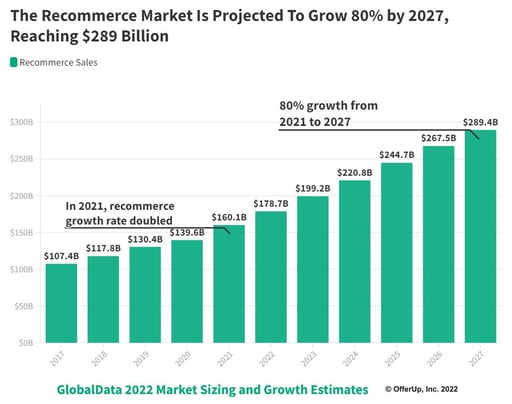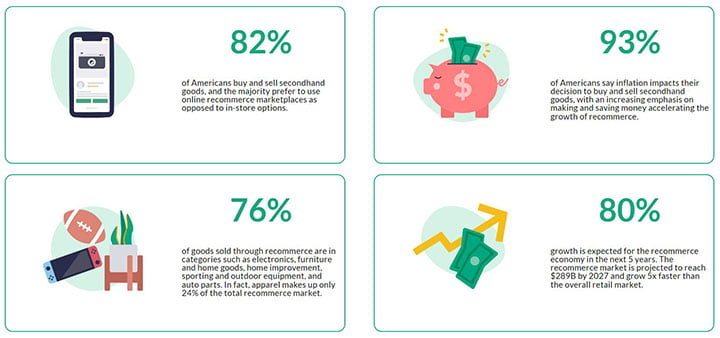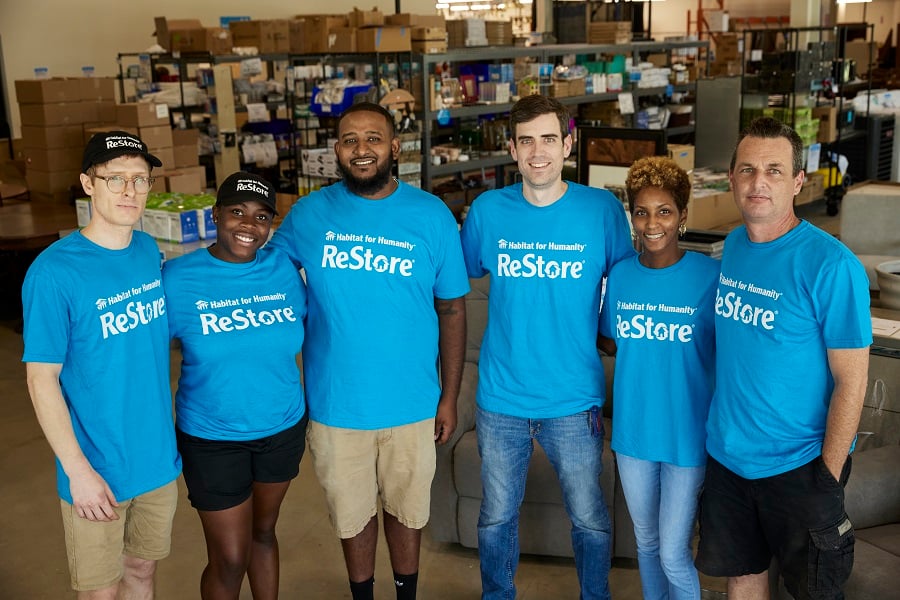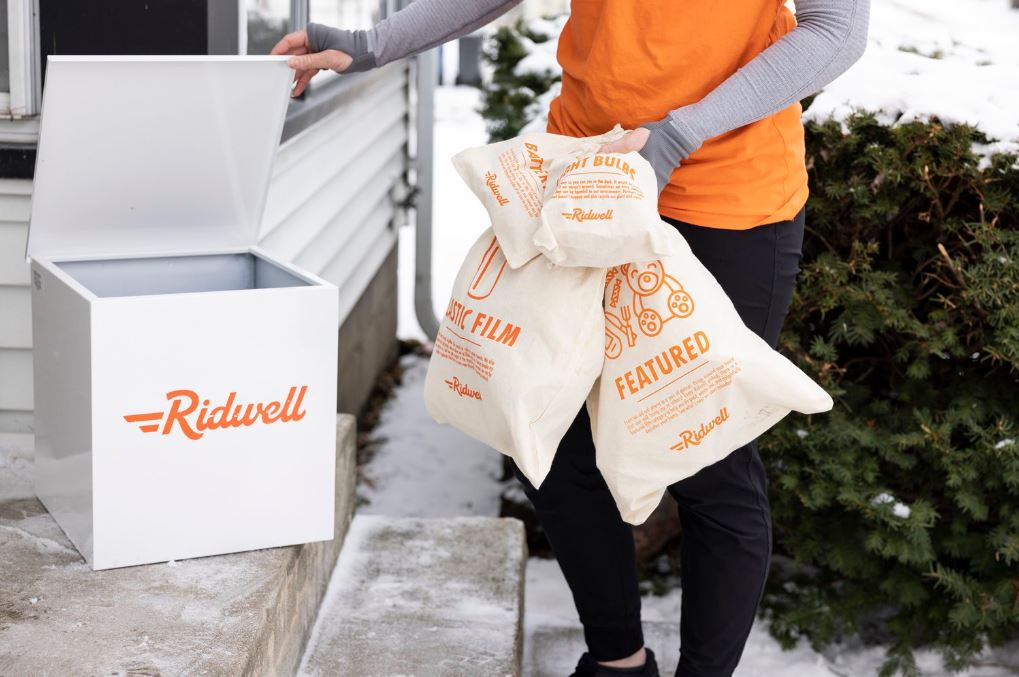ReStore Through the Years: Staff Changes and Growth
If you've stopped by ReStore in New Brighton or Minneapolis, you've probably been greeted by friendly, smiling employees. Our ReStore team keeps...

The 2022 OfferUp Recommerce Report shows that recommerce – the buying and selling of used goods via online marketplaces – continues to rise as fears of inflation loom. This booming industry is expected to grow faster than the overall retail market, which is good news for both wallets and the environment.
Recommerce, or reverse commerce, is a fancy way of saying “selling previously owned, new, or used products” primarily online. While the term may be new, the concept is not. Think of garage sales and flea markets, which have been around for decades. They act as a marketplace for people to sell things they don’t want anymore and for people to buy used items at a lower cost. You could say that recommerce is the digital art of recycling products, reintroducing them to the economy, and extending their shelf life.
The OfferUp Recommerce Report looks at how recommerce is shaping American lives. It shows that “America’s obsession with buying and selling pre-owned items has created an industry that is growing faster than traditional retail, with no signs of slowing down.” Recommerce grew by 15% in 2021, and the market is expected to reach $289 billion by 2027!

The answer may surprise you. Years ago, the top answer may have been clothing. Generation after generation enjoys looking through racks of shirts, pants, and shoes to find something unique or vintage. But the OfferUp Recommerce Report showed that “76% of items bought and sold pre-owned fall into the categories of electronics, furniture, home goods, home improvement, sporting goods, outdoor equipment and auto parts.” Apparel makes up only 24% of the total recommerce market.

ReStore is a great example of this trend in action. Instead of clothing, we specialize in appliances, furniture, lighting and electrical, tools, building materials, and home décor. Check out our Donation Guidelines to see what we accept for donations and what you might find on the sales floor. Unlike traditional recommerce, ReStore does not offer an option to buy products online simply because our inventory changes daily, sometimes hourly!
The biggest driving factor for the recommerce boom is financial fears. Wallets are tightening, interest rates and prices continue to go up, and fears of a recession loom in our minds. It’s no surprise the report found “93% of Americans say inflation impacts their decision to buy and sell secondhand goods.” Simply put, people are skipping the high price tags and opting for pre-owned goods that can get them by and sometimes work better than newer products.
But recommerce isn’t just about buying used goods – it’s about selling them, too. Thanks to digital platforms like eBay and Facebook Marketplace, recommerce has become a secondary (and sometimes necessary) source of income for many people, particularly Gen Z and Millennials. Listing products online is a more convenient way than ever to make a few (or more) dollars off unwanted items. 2021 also saw a rise in recommerce due to pandemic-driven supply chain shortages.

All of these factors combined help destigmatize buying and selling used goods. Consumers are now more open to buying a gently-used appliance instead of buying brand-new, or buying a previously-owned dresser and giving it a DIY makeover. There is a collective understanding that most products in decent shape can still serve a purpose. “A staggering 82%, or 272 million Americans, now buy and/or sell secondhand — which is nearly the same number of Americans who own a smartphone.”
The circular economy of recommerce greatly helps to keep products in use and out of landfills. This kind of recycling and reuse is becoming a necessity to keep the global economy working as the population rises along with the demand for products and finite resources. 80% growth is expected for the recommerce economy in the next five years – that’s 5x faster than the overall retail market!
At ReStore, our staff values each item donated and strives to give it a second life in a new home. We're proud to keep nearly four million pounds of materials out of landfills each year! Plus, ReStore is an exciting place to shop when you never know what will come through the donation doors on any given day. One person’s unwanted sofa could be just the thing someone else needs to create a cozy living room.
Your gift unlocks bright futures! Donate now to create, preserve, and promote affordable homeownership in the Twin Cities.

If you've stopped by ReStore in New Brighton or Minneapolis, you've probably been greeted by friendly, smiling employees. Our ReStore team keeps...
![Easy Ways to Reduce Plastic Waste [VIDEO]](https://restore.tchabitat.org/hubfs/2023%20Blog%20Images/May%202023%20Blog%20Images/Reduce%20DIY%20Friday%202%20-%20Copy.png)
In our world today, going without plastic is hard—almost impossible. But most of the plastic we use, from plastic bags to packaging, ends up in...

While most of us try to be good about recycling cans, plastic bottles, and paper products, many struggle with hard-to-recycle items like batteries...